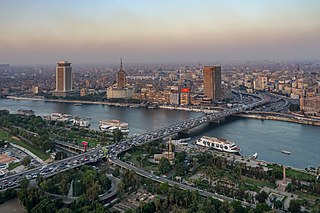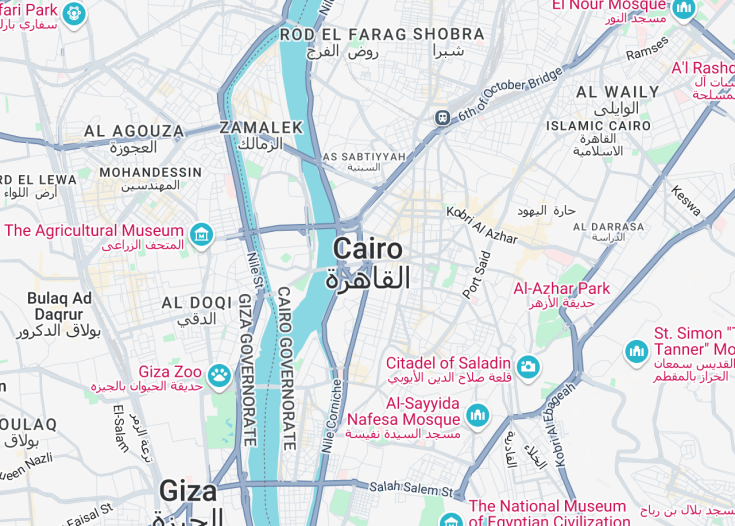Cairo, the sprawling capital of Egypt, stands at the crossroads of ancient and contemporary civilizations. Known as the city of a thousand minarets due to its preponderance of Islamic architecture, Cairo is enveloped by the intricate history of the Pharaohs alongside modern dynamics.
The city’s heart beats around the magnificent pyramids of Giza on its outskirts, offering an enduring testament to its rich heritage. Cairo not only offers historical excursions but also vibrant street life, a plethora of shops, cafes, and museums that narrate the story of Egypt’s past and present.
When visiting Cairo, make sure to experience a felucca ride on the Nile at sunset. This peaceful boat ride offers a unique perspective of the bustling city in soothing twilight.
Plan your visit to coincide with the cooler months from October to April to avoid the oppressive heat of the summer, ensuring a more comfortable exploration of Cairo’s rich tapestry of history and culture.
Top things to do & see in Cairo
Select the following sights and activities to discover best tickets and tours available in Cairo.
Cairo: The Heartbeat of Egypt
| Country | Egypt |
| Time in Cairo | GMT+2 |
| Language spoken | Arabic |
| Population | 9.6 million (source: World Bank) |
| Currency | Egyptian Pound (EGP £) |
| Airports |
|
Cairo, the sprawling capital of Egypt, is one of the largest cities in both Africa and the Middle East. This city is renowned for its rich history, which dates back to the time of the pharaohs. Millennia-old monuments sit along the fertile Nile River Valley, including Egypt’s most famous landmarks — the Pyramids of Giza and the Great Sphinx. Beyond the ancient grandeur, Cairo is also a vibrant modern metropolis that boasts a variety of cultural institutions like the Museum of Egyptian Antiquities and a bustling street life in its bazaars such as Khan el-Khalili.
Where is Cairo?
Located on the banks of the Nile River near the Delta, Cairo serves as the strategic and cultural center of Egypt.
Distances:
| Route | Distance by car | Time by car |
|---|---|---|
| Alexandria to Cairo | 138 mi / 222 km | Approx. 2.5 hours |
| Luxor to Cairo | 313 mi / 504 km | Approx. 4.5 hours |
What is Cairo famous for?
Cairo is particularly famous for its historical ties to ancient civilizations and its rich collection of antiquities, including the precious Royal Mummies Collection and rare artifacts.
History
Pre-3000 BCE: Prehistoric Settlements
Before the pharaohs ruled, the area of present-day Cairo was inhabited by primitive communities who lived near the fertile Nile River Valley, relying on hunting, gathering, and later, the nascent practices of agriculture.
3000 BCE – 642 AD: Ancient Capital and Roman Rule
With the founding of the nearby city of Memphis, the area became an important strategic and cultural hub in ancient Egypt. The region gained further prominence under Roman rule starting in 30 BCE, serving as a key administrative and military center.
642 – 1517: Islamic Era and the City’s Founding
In 642 AD, the Arab Muslim conquest led to the establishment of Fustat, the first Islamic capital of Egypt, near the modern location of Cairo. The city of Cairo itself was founded in 969 AD by the Fatimids. It became a center of learning, culture, and politics in the Islamic world during the Middle Ages.
1517 – 1914: Ottoman Rule to British Occupation
Cairo fell under Ottoman rule in 1517, marking a period of economic and cultural prosperity, characterized by the construction of many architecturally significant Islamic buildings. The city’s modernization accelerated in the 19th century under Khedive Ismail, who aimed to transform Cairo into a metropolis akin to Paris. The British occupation beginning in 1882 prompted further infrastructural development and cultural exchange.
1914 – Present: Modern Developments and Global Recognition
Throughout the 20th century, Cairo witnessed substantial growth and urbanization, evolving into a bustling metropolis. Today, it stands as a significant political, economic, and cultural capital in the Middle East, renowned for its preserved historical sites alongside modern advancements.
Visit Cairo
What to see and do in Cairo, Egypt
Explore the rich tapestry of Cairo, from ancient ruins to vibrant bazaars. Visit the iconic Pyramids of Giza, one of the Seven Wonders of the Ancient World. Wander through the expansive Egyptian Museum, home to countless artifacts.
Shop at Khan El-Khalili, Cairo’s major souk, or stroll along the Nile promenade for breathtaking views. For a taste of Cairo’s spiritual heritage, the historic mosques of Muhammad Ali and Sultan Hassan are must-visits. Finally, indulge in authentic Egyptian cuisine at local eateries throughout the city.
- Pyramids of Giza
- Egyptian Museum
- Khan El-Khalili bazaar
- Nile promenade
- Muhammad Ali Mosque
- Sultan Hassan Mosque
Festive Cairo
Cairo hosts numerous cultural and historical events throughout the year, such as the Cairo International Film Festival in November and the Cairo Jazz Festival in March. Each event reflects Cairo’s vibrant arts scene and offers visitors unique glimpses into both contemporary and traditional Egyptian culture.
Best time to visit Cairo
The best time to visit Cairo is during the cooler months from October to April, when the weather is mild and conducive to exploring the city’s many outdoor attractions without the extreme heat of summer.
Is Cairo worth visiting?
Indeed, Cairo is worth visiting. It is a city rich in history that spans millennia, offering an unparalleled glimpse into ancient civilizations with its world-renowned archaeological sites. Additionally, Cairo is a melting pot of cultures, showcasing a unique blend of modernity and tradition in its bustling streets, grand mosques, and vibrant bazaars. Whether you are a history enthusiast, food lover, or adventurous traveler, Cairo promises a memorable and enriching experience.










